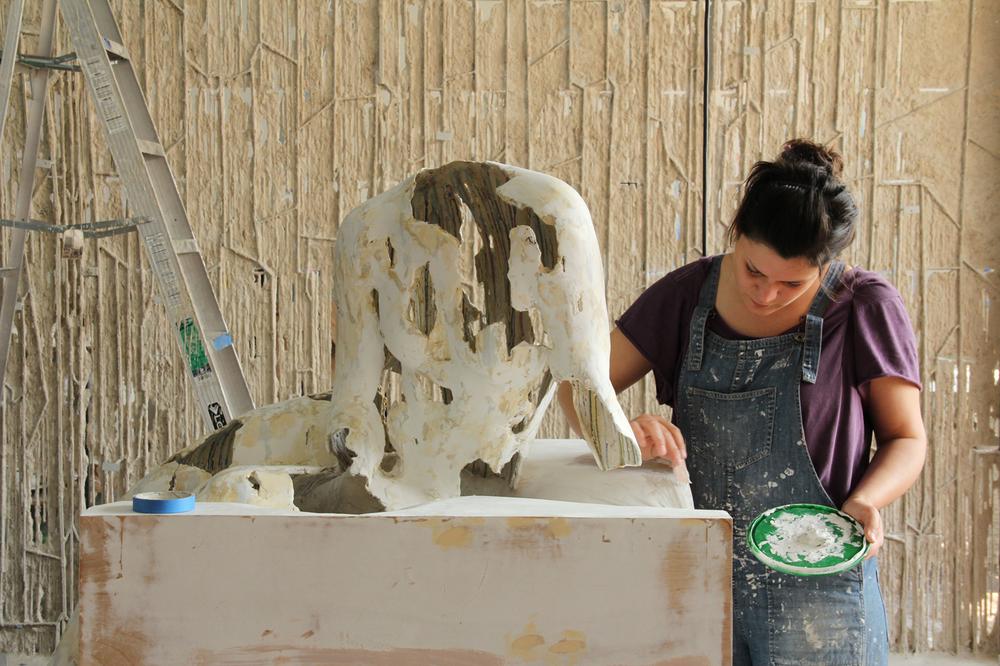Diana Al-Hadid. Nothing Is Stable
Diana Al-Hadid’s drippy, membrane-like sculptures embody the tension between destruction and creation, appearing precarious despite their industrial materials. Using steel wire, plywood, cardboard, and plaster, the artist materializes sublime landscapes and robust figures whose ethereal, hollow interiors contrast the laws of physics with ghostly weightlessness. Born in Aleppo, Syria—a city layered with ruins—Al-Hadid moved to Ohio when she was five. She began her formal study of art as a drawing major at Ohio’s Kent State University, but soon switched to sculpture when she discovered the vast trove of materials available for building up and out. For the artist, who works to shape an image or idea into form, “when you finally do have something material, you want it to return in the opposite direction—namely to shift from real space and time to the propositional or ‘dream’ space where it originated.”1 And so, Al-Hadid’s use of material both amasses and dissolves form, while her compositional lines look at once like building blueprints and archaeological sites of collapsed ruins.
Diana Al-Hadid, in Michaël Amy, “Ghosts of Things: A Conversation with Diana Al-Hadid,” Sculpture 32, no. 2 (2013): 24. ↩︎
